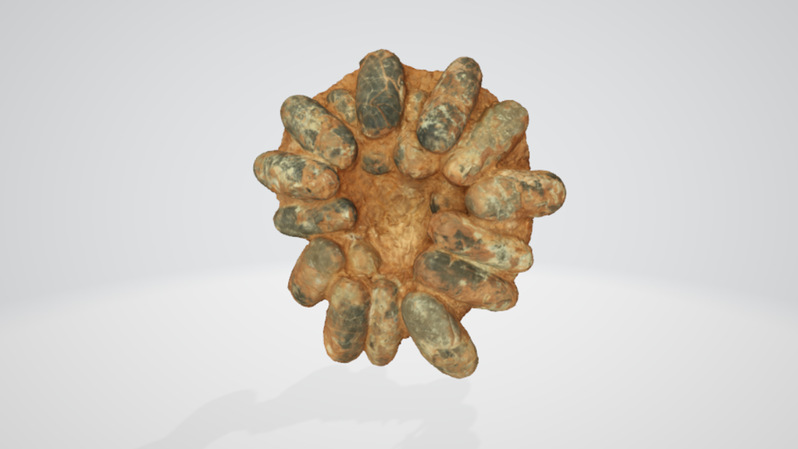
产地:江西赣州
特征:
恐龙蛋化石是非常珍贵的古生物化石,最早发现于法国南部普罗旺斯的白垩纪地层中,全世界范围内发现的恐龙蛋化石的数量不多。从恐龙蛋原始结构在地层中保存的完好程度来看,一般分为两类:一类是恐龙蛋壳化石;一类是完整的恐龙蛋化石。在完整的恐龙蛋化石中,有相当一部分含有胚胎。恐龙蛋化石可呈窝状产出,排列有序。窃蛋龙、驰龙、伤齿龙这些小型兽脚类恐龙的蛋一般是长形的;马门溪龙、梁龙和雷龙这些4条腿走路的大块头的蛋是圆形的;鸭嘴龙那样的鸟脚类恐龙生椭圆蛋;至于中生代霸主--霸王龙的蛋是什么模样,还没有确定。
恐龙蛋化石一般可呈黑、黄、青、灰、褐、红等不同的颜色。其形状扁圆如胆,俗称“石胆”,看上去像倒扣的龟盖。它的表面有一层指甲厚、略带线纹的光洁皮壳,敲一块皮壳拿至鼻前可闻到一股淡淡的鱼腥气味。
恐龙蛋化石对于探索恐龙的繁殖行为、恐龙蛋壳的起源和演变,复原恐龙时代的生态环境;对于研究恐龙的出现、繁盛和绝灭;对于划分和对比白垩纪地层以及确定地层的地质年代;对于研究古气候、古地理和古生物的变迁,提供找矿启示等,都是不可多得的珍贵实物资料。Dinosaur egg fossil
Provenance: Ganzhou, Jiangxi, China
Characteristics:
Dinosaur eggs are the organic vessels in which a dinosaur embryo develops. When the first scientifically documented remains of dinosaurs were being described in England during the 1820s, it was presumed that dinosaurs had laid eggs because they were reptiles. In 1859, the first scientifically documented dinosaur egg fossils were discovered in France by Jean-Jacques Poech, although they were mistaken for giant bird eggs. The first scientifically recognized dinosaur egg fossils were discovered in 1923 by an American Museum of Natural History crew in Mongolia. Since then many new nesting sites have been found all over the world and a system of classification based on the structure of eggshell was developed in China before gradually diffusing into the West. Dinosaur eggshell can be studied in thin section and viewed under a microscope. The interior of a dinosaur egg can be studied using CAT scans or by gradually dissolving away the shell with acid. Sometimes the egg preserves the remains of the developing embryo inside. The oldest known dinosaur eggs and embryos are from Massospondylus, which lived during the Early Jurassic.